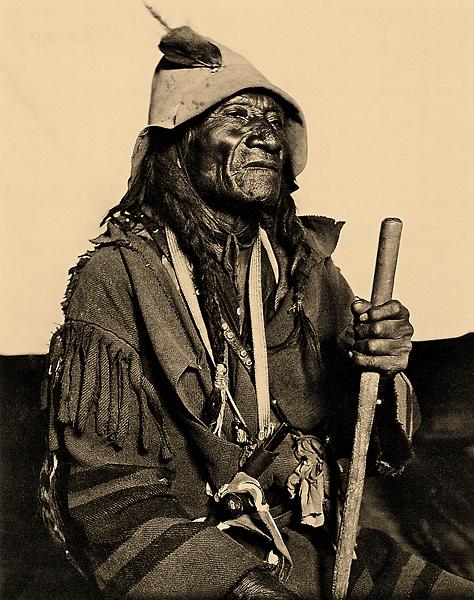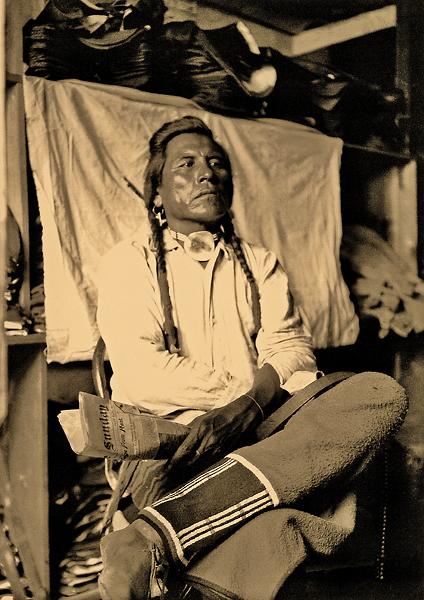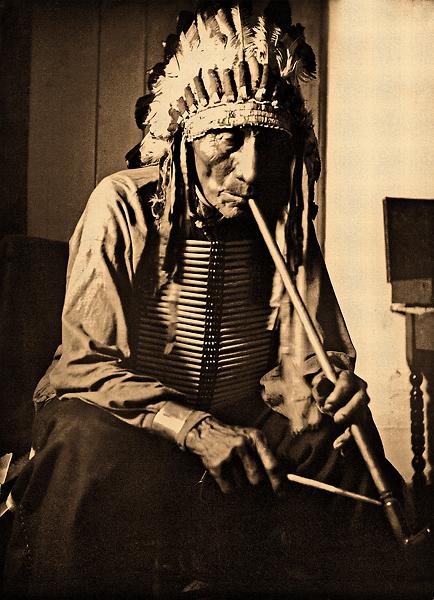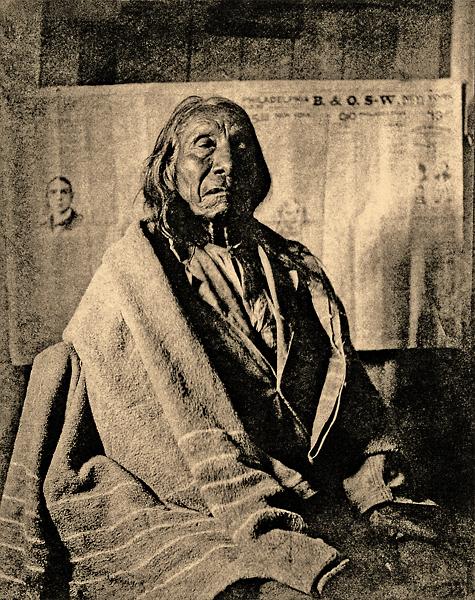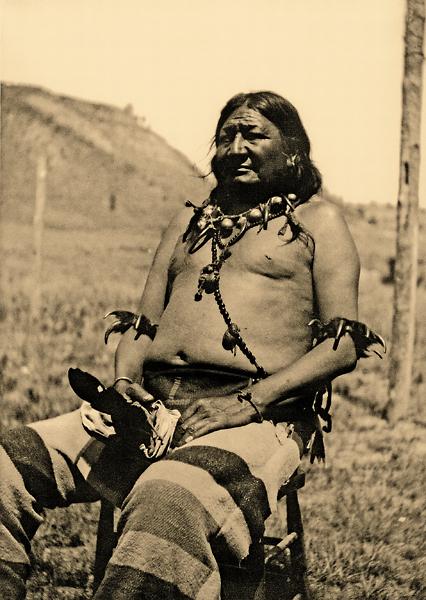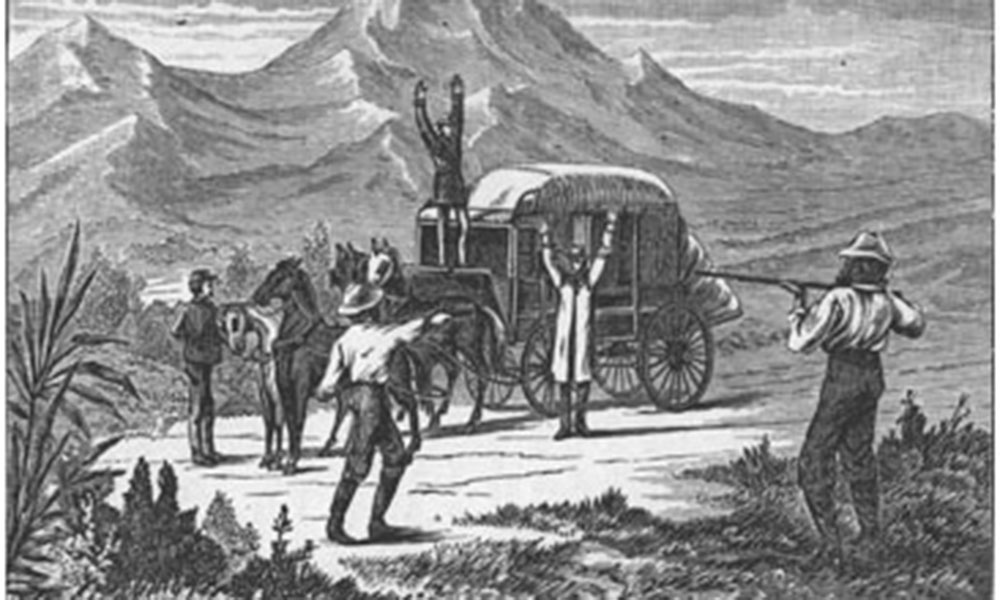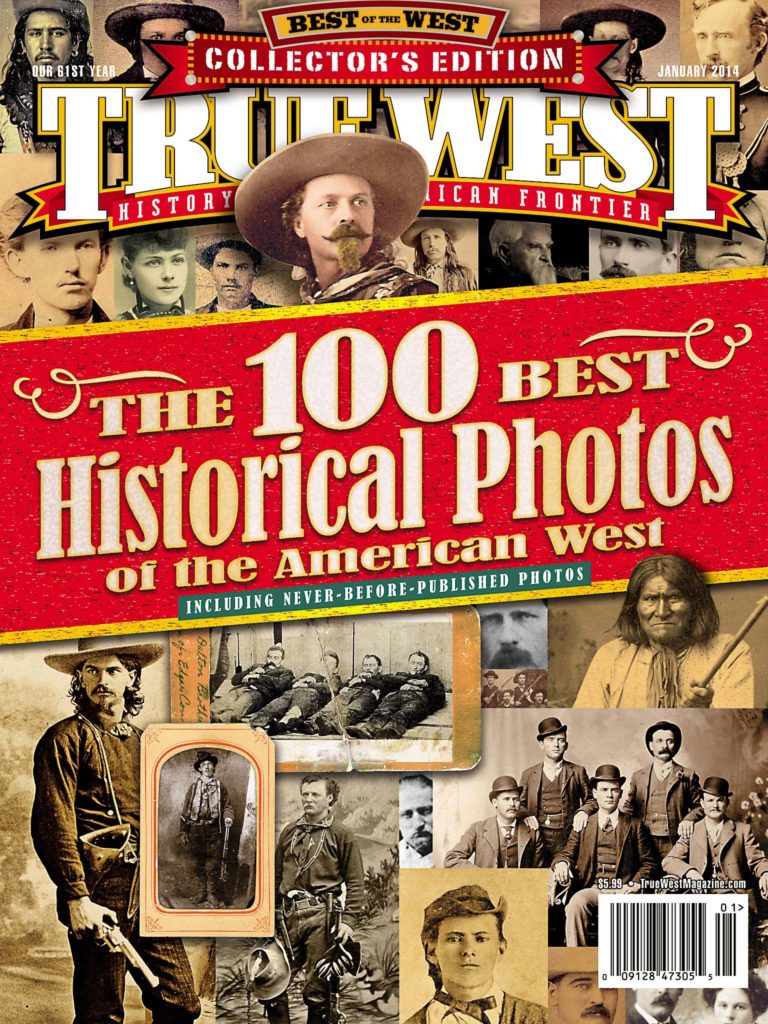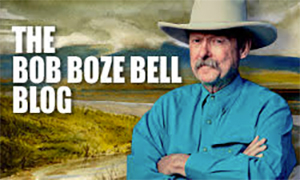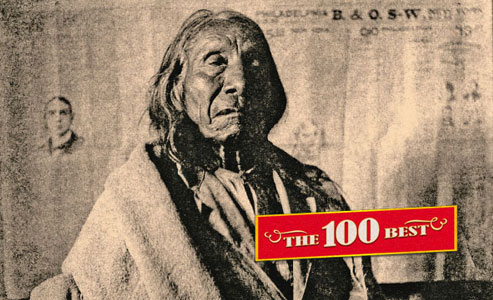 In the early 1980s, Forrest Fenn, who recently enticed our readers to seek out his million-dollar treasure, bought Joseph Henry Sharp’s estate, including the cabin the artist had built at the foot of the Little Big Horn battleground in 1901.
In the early 1980s, Forrest Fenn, who recently enticed our readers to seek out his million-dollar treasure, bought Joseph Henry Sharp’s estate, including the cabin the artist had built at the foot of the Little Big Horn battleground in 1901.
It was the headquarters, in 1926, for the 50th reunion of that famous battle. Most of the still-living warriors and troopers signed the guest register in the cabin, which now resides in a place of honor at the Buffalo Bill Center of the West in Cody, Wyoming. Also in the estate were about 2,800 photos and nitrate negatives that the artist had taken for the purpose of painting what he called the “faces of a fast vanishing race.” Shared on these pages are Fenn’s stories of a few of those photographs.
—The Editors
To see more of True West’s Historical Best Photos slideshows, please clicks on the links below:
- 100 Best Historical Photos
- Classic Gunfights: Shoot-out at Stinking Springs
- Unsung: Buffalo Gal
- The Best of Arts & Collectables for 2014
- The Best of Firearms for 2014
- The Best of Heritage Travel for 2014
- The Best of Movies TV Series & DVDs for 2014
- The Best of Western Books for 2014
- The Best of Western Wear for 2014
Photo Gallery
This Custer battlefield warrior’s specialty was raiding enemy camps and stealing horses. As a model for Sharp, he once saw his portrait hanging on the artist’s studio wall and asked for five dollars. When Sharp asked him why he wanted five dollars, the Indian scout replied that he could not sleep, and it was Sharp’s fault. He said, “You painted me with my eyes open, how do you expect me to sleep with my eyes open?”
Curley was a scout for Gen. George Custer and watched the 1876 Battle at the Little Big Horn from a periphery. He was described as a “remorse, taciturn sort of fellow and disinclined to make friends, and rarely talks or pays much attention to anyone.” He once said, “I spring from Crow earth and will never leave it. A teepee and food for my wife and child—grass for my ponies—and I go back to the ground of my fathers.” Fenn tells us this photo has never been published before.
Flat Iron, a medicine man of the Oglala Sioux, was raised by Sitting Bull. He had nine wives, 75 children and lived to be 107 years old. He gave Joseph Henry Sharp a prime tanned elkskin and said it was the “best you can find in two days ride in any direction.”
– All images courtesy Forrest Fenn –
Red Cloud was one of the world’s greatest warriors. Very prominent as the leader in the Red Cloud War (1866-68), he was the principal chief of the Oglala Teton Sioux and perhaps the most famous and powerful chief in the history of the tribe. He counted 80 coup or separate deeds of valor in battle. The chief posed for Sharp in the artist’s Montana studio—if the price was right—but quickly became impatient and complained, “I do all the work and you have all the fun.” The last time Sharp painted his portrait, the chief’s eyes were failing, and he was anxious that it not show.
Chief Two Moons led the Cheyenne nation against Custer in 1876. He was known for killing a large grizzly bear with a knife. When asked how big the bear was, Two Moons raised his arms and replied, “To the sky.” He proudly wore a necklace and arm bands, which he made from the bear’s claws.


